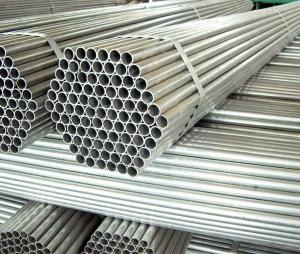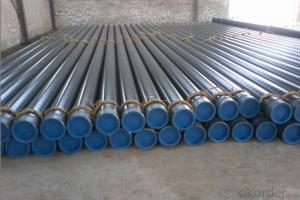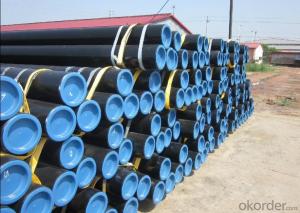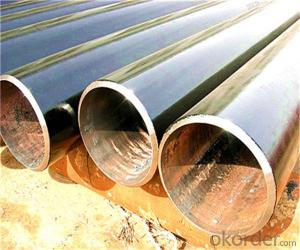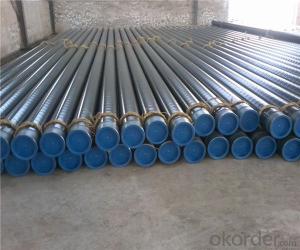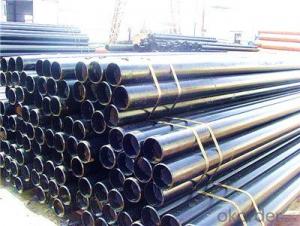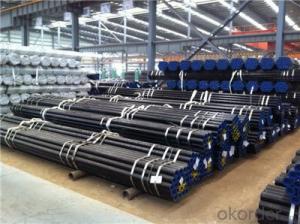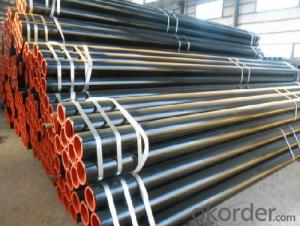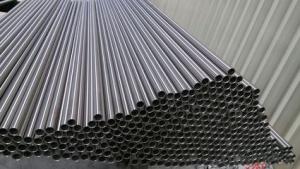Seamless Steel Pipe With High Quality And Factory Price
- Loading Port:
- Tianjin
- Payment Terms:
- TT OR LC
- Min Order Qty:
- 23 m.t.
- Supply Capability:
- 400 m.t./month
OKorder Service Pledge
OKorder Financial Service
You Might Also Like
PRODUCT DETAILS
1.Structure of Seamless Steel Pipe Description:
A large amount of Seamless Steel Pipes is offered to the clients at cost effective rates. These pipes are extremely durable, resistant to corrosion and have high tensile strength. Our pipes are used in nuclear plants, power plants, refineries and construction industry across the country. Furthermore, we are capable of providing these seamless pipes to the clients in bulk quantity.
2.Main Features of the Steel Pipe:
• High manufacturing accuracy
• High strength
• Small inertia resistance
• Strong heat dissipation ability
• Good visual effect
•Reasonable price
3.Packaging & Delivery:
| Packaging Details: | Seaworthy packages, bundles wrapped with strong steel strip |
| Delivery Detail: | 15-30 days after received 30% TT |
4.Seamless Steel Pipe Specification:
| Standard: | GB, DIN, ASTM,ASME, ASTM A106-2006, ASTM A53-2007 |
| Grade: | 10#,20#, 45#, 16Mn |
Thickness: | 8 - 33 mm |
| Section Shape: | Round |
| Outer Diameter: | 133 - 219 mm |
| Place of Origin: | Shandong, China (Mainland) |
| Secondary Or Not: | Non-secondary |
| Application: | Hydraulic Pipe |
| Technique: | Cold Drawn |
| Certification: | API |
| Surface Treatment: | factory state or painted black |
| Special Pipe: | API Pipe |
| Alloy Or Not: | Non-alloy |
| Length: | 5-12M |
| Outer Diameter: | 21.3-610mm |
5.Product pictures
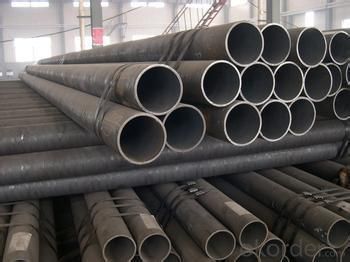
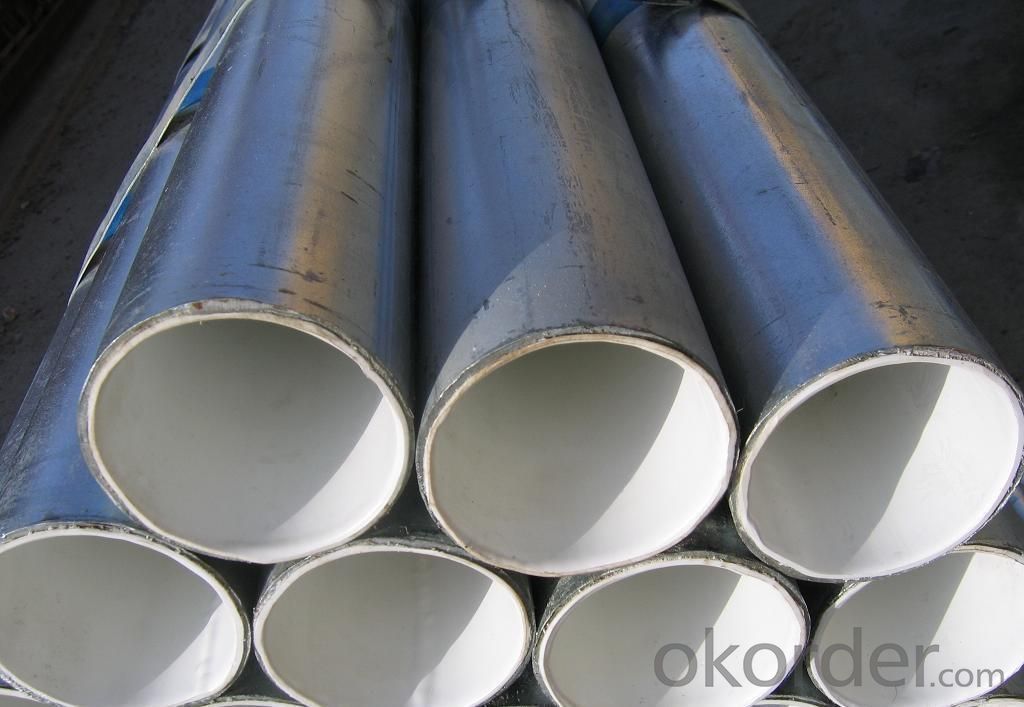
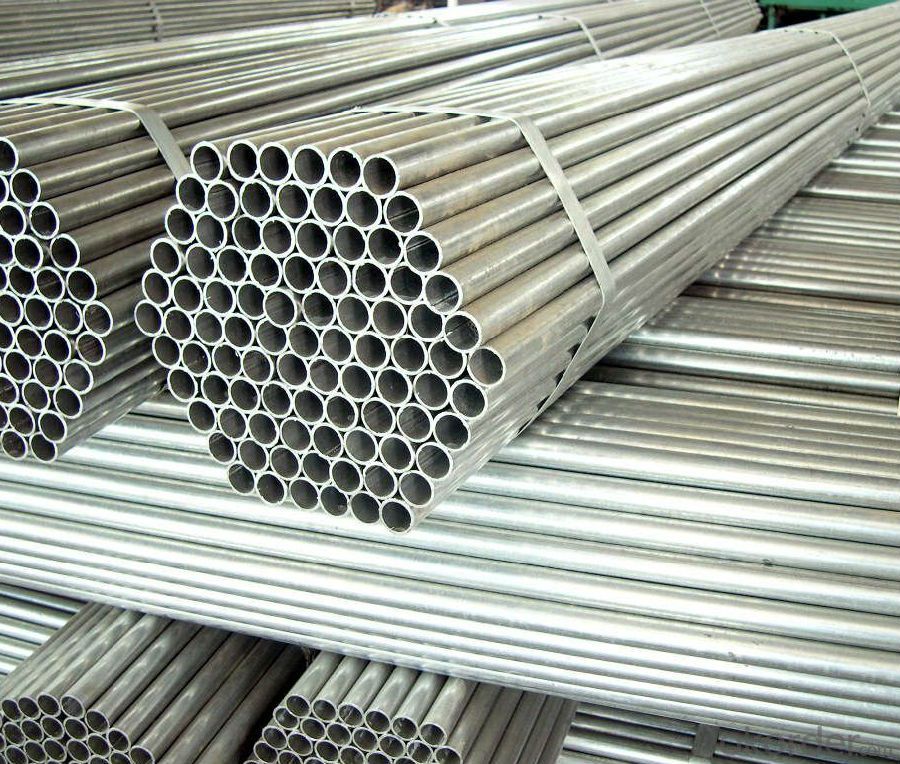
5.FAQ of Seamless steel pipe:
①How is the quality of your products?
Our products are manufactured strictly according to national and internaional standard, and we take a test
on every pipe before delivered out. If you want see our quality certifications and all kinds of testing report, please just ask us for it.
Guaranteed: If products’ quality don’t accord to discription as we give or the promise before you place order, we promise 100% refund.
②How about price?
Yes, we are factory and be able to give you lowest price below market one, and we have a policy that “ for saving time and absolutely honest business attitude, we quote as lowest as possible for any customer, and discount can be given according to quantity”,if you like bargain and factory price is not low enough as you think, just don’t waste your time.Please trust the quotation we would give you, it is professional one.
③Why should you chose us?
Chose happens because of quality, then price, We can give you both.Additionally, we can also offer professional products inquiry, products knowledge train(for agents), smooth goods delivery, exellent customer solution proposals.Our service formula: good quality+good price+good service=customer’s trust.
SGS test is available, customer inspection before shipping is welcome, third party inspection is no problem.
Any question, pls feel free to contact us !
- Q: What are the common applications of steel pipes in the water distribution system?
- The common applications of steel pipes in the water distribution system include carrying potable water from the water treatment plants to homes and businesses, transporting water for irrigation purposes, and facilitating the flow of water in industrial processes. Steel pipes are often preferred due to their durability, resistance to corrosion, and ability to handle high water pressure.
- Q: What are the different types of supports used for steel pipes in buildings?
- There are several different types of supports that are commonly used for steel pipes in buildings. 1. Pipe Hangers: These are specifically designed to support the weight of the pipe and are usually made of metal or plastic material. Pipe hangers are attached to the building structure and hold the pipe in place, preventing it from sagging or moving. 2. Pipe Clamps: These are used to secure the pipe to a wall or other structural element. Pipe clamps typically consist of a metal band that wraps around the pipe and is then secured to the structure with bolts or screws. They provide stability and prevent the pipe from shifting or vibrating. 3. Pipe Shoes: These are support devices that are installed underneath the pipe to distribute the weight evenly and provide additional support. Pipe shoes are typically made of metal or rubber and can be attached to the building structure or embedded in concrete foundations. 4. Pipe Guides: These are used to guide the movement of the pipe and prevent it from shifting or bending excessively. Pipe guides are usually made of metal or plastic and are installed at specific intervals along the length of the pipe. 5. Pipe Rollers: These are used to support horizontal pipes and allow for expansion and contraction due to temperature changes. Pipe rollers are typically made of metal and consist of a series of rollers that the pipe rests on. They allow the pipe to move freely without causing damage to the building structure. It is important to select the appropriate type of support based on the specific requirements of the steel pipe and the building structure. Properly supporting steel pipes in buildings ensures their stability, durability, and overall safety.
- Q: What are the factors that affect the price of steel pipes?
- The factors that affect the price of steel pipes include the cost of raw materials, such as iron ore and coal, as well as the demand and supply dynamics in the steel industry. Other factors include labor costs, energy prices, transportation costs, and any taxes or tariffs imposed on steel imports. Additionally, market conditions, global economic trends, and government regulations can also influence the price of steel pipes.
- Q: What are the different methods of transporting steel pipes?
- There are several methods of transporting steel pipes, including by truck, rail, ship, and pipeline. Each method has its advantages and is chosen based on factors such as distance, cost, and accessibility. Trucks are commonly used for shorter distances or when the delivery location is not easily accessible by other means. Rail transport is efficient for long distances and can handle large quantities of steel pipes. Shipping by sea is ideal for international shipments or when the destination is located near a port. Lastly, pipelines are used for transporting steel pipes for oil and gas industries, as they provide a direct and continuous flow.
- Q: How are steel pipes protected against UV radiation?
- Steel pipes are typically protected against UV radiation through the application of coatings or paints that contain UV inhibitors. These coatings act as a barrier between the steel surface and the harmful UV rays, preventing damage and degradation of the pipes over time. Additionally, some steel pipes may be treated with zinc or other metals, which offer inherent UV protection and enhance the overall durability of the pipes.
- Q: How do you calculate the buoyancy of submerged steel pipes?
- To calculate the buoyancy of submerged steel pipes, you need to consider the principle of Archimedes' buoyancy. This principle states that the buoyant force acting on an object submerged in a fluid is equal to the weight of the fluid displaced by the object. To calculate the buoyant force, you need to determine the volume of the fluid displaced by the submerged steel pipe. The volume can be calculated by multiplying the cross-sectional area of the pipe by the length of the submerged portion. Next, you need to determine the density of the fluid in which the steel pipe is submerged. This can be obtained from the fluid's properties or by referring to known values. Once you have the volume and density of the fluid, you can determine the weight of the fluid displaced by the submerged pipe using the equation: weight = volume × density × acceleration due to gravity. Finally, the buoyant force can be calculated by multiplying the weight of the displaced fluid by the acceleration due to gravity. This will give you the upward force exerted on the submerged steel pipe by the fluid. It is important to note that in order to accurately calculate the buoyancy of submerged steel pipes, you should also consider any additional factors such as the weight of the pipe itself, any attached equipment or coatings, and the specific conditions of the fluid in which it is submerged.
- Q: What quota should be installed for heating seamless steel pipe?
- Installation quota of seamless steel pipe project, if it is indoor engineering, sets of welded steel pipe, the price adjustment can
- Q: What is the difference between schedule 10 and schedule 40 steel pipes?
- Schedule 10 and schedule 40 steel pipes are both commonly used in various industries for different purposes. The main difference lies in their wall thickness and pressure ratings. Schedule 10 steel pipes have a thinner wall compared to schedule 40 pipes. This means that schedule 10 pipes have a smaller internal diameter and can handle less pressure compared to schedule 40 pipes. The wall thickness of schedule 10 pipes is typically 0.109 inches, while schedule 40 pipes have a wall thickness of 0.154 inches. Due to their thinner walls, schedule 10 pipes are primarily used for low-pressure applications such as domestic water supply, drainage systems, and general plumbing. They are also commonly used for lightweight structures or where weight is a concern. On the other hand, schedule 40 pipes are designed to handle higher pressure and are often used in industrial applications, including oil and gas pipelines, chemical processing plants, and high-pressure fluid systems. The thicker walls of schedule 40 pipes provide them with increased strength and durability to withstand higher pressure and stress. In summary, the main difference between schedule 10 and schedule 40 steel pipes is their wall thickness and pressure ratings. Schedule 10 pipes have a thinner wall and are suitable for low-pressure applications, while schedule 40 pipes have a thicker wall and can handle higher pressure. It is important to choose the appropriate schedule based on the specific requirements and pressure limitations of the intended application.
- Q: What's the difference between No. 20 steel pipe and 27SiMn Steel Pipe?
- Cold plastic deformation and for bending, rolling, bending and hammer arch processing, arc welding and contact welding welding performance is good, when the thickness is small, prone to strict requirement of shape crack or complex shape parts. The cold or normalizing condition of cutting is better than that of annealing. It is generally used to make the material with little force and high toughness.
- Q: Can steel pipes be used for air conditioning systems?
- Yes, steel pipes can be used for air conditioning systems. Steel pipes are commonly used in HVAC (Heating, Ventilation, and Air Conditioning) systems as they are durable, can withstand high pressures, and are resistant to corrosion.
Send your message to us
Seamless Steel Pipe With High Quality And Factory Price
- Loading Port:
- Tianjin
- Payment Terms:
- TT OR LC
- Min Order Qty:
- 23 m.t.
- Supply Capability:
- 400 m.t./month
OKorder Service Pledge
OKorder Financial Service
Similar products
Hot products
Hot Searches
Related keywords
